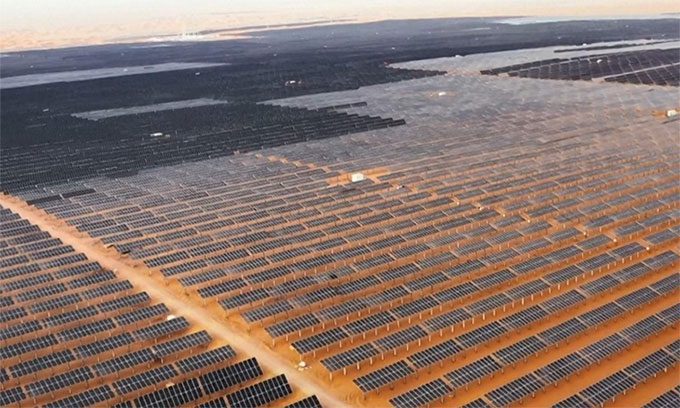After becoming operational, the first power transmission project in the Gobi Desert will supply over 36 billion kWh of electricity from Ningxia to Hunan annually.
The UHV Project will transmit electricity across six provinces in China. (Video: CGTN)
The first Ultra High Voltage (UHV) power transmission project in China located in the desert began construction in the Ningxia Hui Autonomous Region on June 11, facilitating electricity supply from the northwest region to Hunan Province in central China. The Ningxia – Hunan UHV power transmission project will carry electricity generated at the southern edge of the Gobi Desert, comprising 9 gigawatts (GW) of solar power, 4 GW of wind power, and 4.64 GW of coal-fired thermal power, according to Xiang Li, deputy director of the development department at Ningxia Power Company.
Running through the provinces of Gansu, Shaanxi, Chongqing, and Hubei, the 800 kilovolt UHV direct current project spans 1,634 kilometers. The project is expected to become operational in 2025 with a total investment of approximately $3.9 billion. Renewable energy sources will account for more than half of the total transmission capacity.
China has many large deserts with abundant solar and wind energy resources. The construction of this project marks a significant advancement in the west-to-east power transmission program, helping to balance the electricity supply and demand across different regions of the country.

The 800 kilovolt UHV power transmission project spans 1,634 kilometers.
Once operational, the Ningxia – Hunan UHV power transmission project will provide more than 36 billion kWh of electricity from Ningxia to Hunan annually and reduce over 16 million tons of carbon dioxide emissions, according to Tan Junwu, vice president of Hunan Power Company. The project will effectively enhance the electricity supply capacity in Hunan.
China aims to achieve 455 GW of wind and solar power generation capacity in the Gobi and other desert regions by 2030 as part of its efforts to increase renewable energy usage and meet climate change goals. The country is also striving for carbon neutrality by 2060.
Yu Bing, deputy director of the National Energy Administration, stated that constructing wind and solar power generation facilities in the Gobi and other deserts is a crucial measure for promoting green energy transformation and building a new energy system.





















































